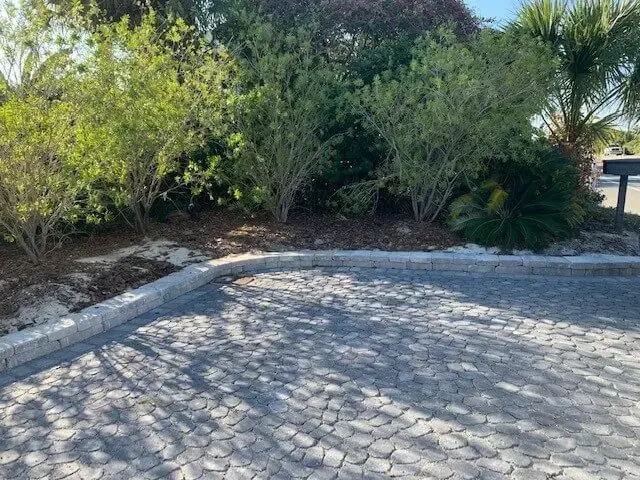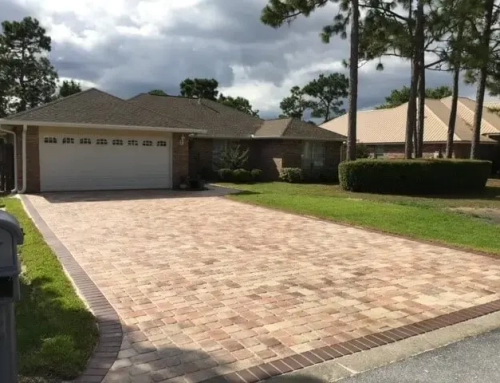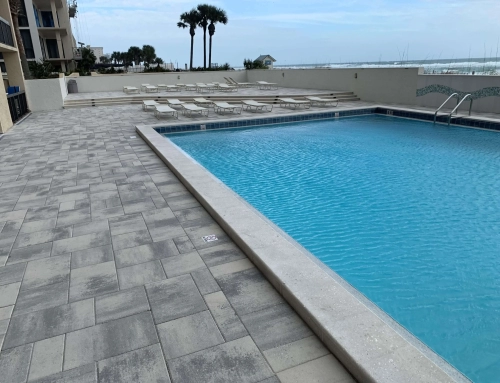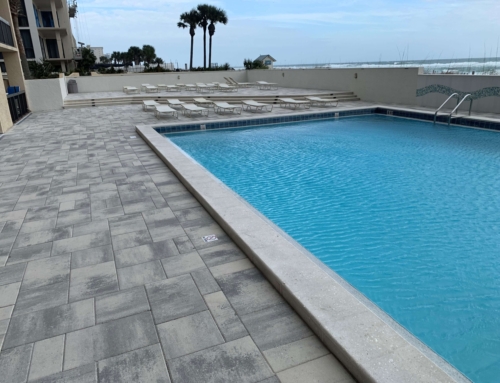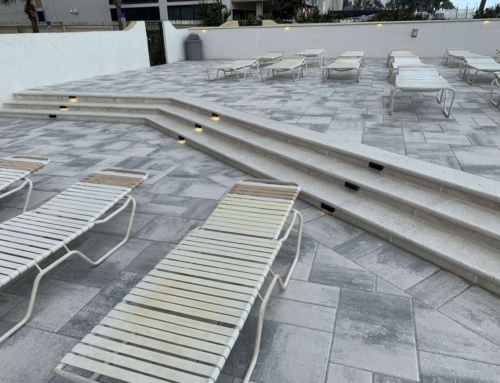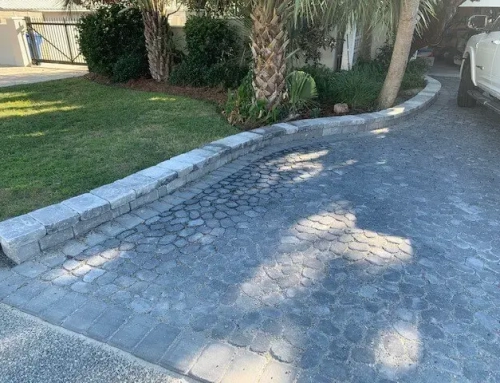Paver Retaining Walls: The Importance Of Preparation and Planning
Before you start building your paver retaining wall, proper preparation and planning are essential to ensure a successful installation:
- Tools and Materials Needed:
- Pavers
- Gravel base material
- Sand for leveling
- Drainage pipe
- Geotextile fabric
- Masonry adhesive
- Shovel
- Level
- Tape measure
- Rubber mallet
- Compactor (optional)
- Measuring and Marking the Area:
- It is important to use stakes and string to outline the wall’s footprint.
- Mark the height of the wall by driving stakes into the ground at each end and stretching a string between them at the desired height.
- Check Local Regulations:
- 30A Delta Pavers will always check with local authorities to ensure compliance with any building codes or permit requirements. Some areas may have restrictions on the height or location of retaining walls.
Base Preparation
A strong foundation is crucial for the stability and longevity of your paver retaining wall. Follow these steps to prepare the base:
- Excavation:
- Excavate the area to a depth that allows for both the gravel base and the first course of pavers. The depth will vary depending on the height of the wall, but a general rule is to dig down about 6-12 inches for the gravel base.
- Leveling and Adding Gravel:
- Once excavated, level the base with a tamper or compactor to create a firm, even surface.
- Spread a layer of gravel evenly across the base area. The gravel helps with drainage and provides a stable foundation for the wall. Compact the gravel using a compactor or tamper to prevent settling.
Laying the First Course of Pavers
The first course of pavers is the most important, as it sets the foundation for the entire wall. Here’s how to do it correctly:
- Positioning the First Paver:
- Start by placing the first paver at one end of the wall. Ensure it is level in all directions. If necessary, use sand to adjust the paver’s position.
- Laying the Rest of the Course:
- Continue laying pavers along the length of the wall, checking each one for level as you go. Use a rubber mallet to gently tap them into place.
- It’s crucial to ensure the first course is perfectly level, as any unevenness will be amplified as you build the wall higher.
Building Up the Wall
Once the first course is laid, you can start building up the wall:
- Staggering the Pavers:
- For added stability, stagger the joints of each subsequent course so that they do not line up with the joints of the course below. This pattern, known as running bond, helps distribute the load and prevents weak spots in the wall.
- Cutting Pavers:
- If needed, use a masonry saw or chisel to cut pavers to fit irregular spaces or to maintain the staggered pattern. Always wear appropriate safety gear when cutting pavers.
- Using Adhesive:
- For additional strength, apply masonry adhesive between courses, especially if the wall will be more than a few feet tall. This helps lock the pavers together and prevents shifting over time.
Adding Drainage and Backfill
Proper drainage is essential to prevent water buildup behind the retaining wall, which can cause the wall to fail:
- Installing Drainage Pipes:
- Lay a perforated drainage pipe behind the first course of pavers, ensuring it slopes slightly to direct water away from the wall. Cover the pipe with gravel to help filter the water.
- Backfilling:
- As you build each course, backfill the area behind the wall with gravel. The gravel allows water to drain freely and reduces pressure on the wall. Compact the backfill material to prevent settling.
Capping the Wall
The final step in building your paver retaining wall is to add the capstones:
- Placing the Capstones:
- Once the wall reaches the desired height, place the capstones on top. These pavers should be slightly larger than the ones used in the wall to create a finished look.
- Apply masonry adhesive to the top course before setting the capstones in place. Ensure they are aligned and level.
- Sealing the Capstones:
- For added protection and to enhance the appearance, consider sealing the capstones. This helps prevent water penetration and reduces the risk of stains.

